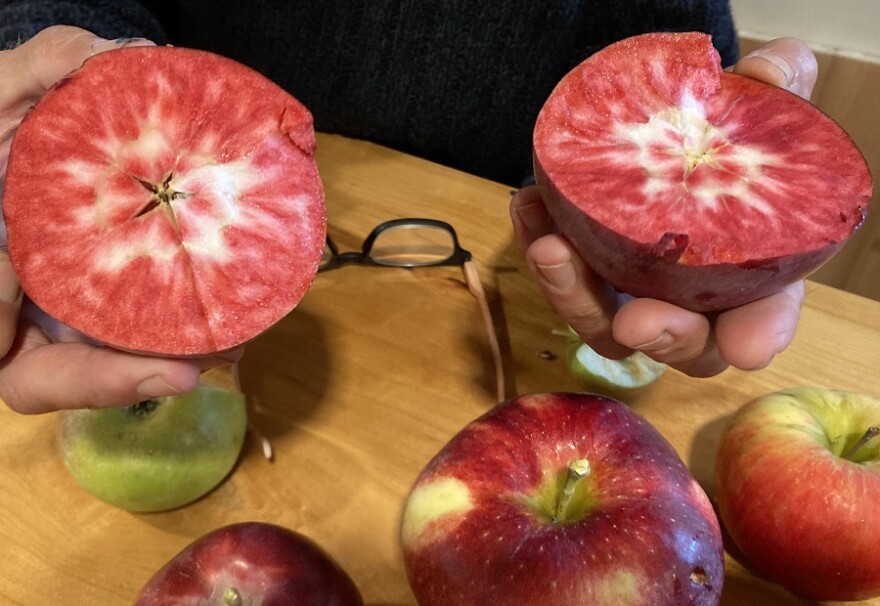Why do apples have stems? Why do fruits start out as flowers? How did the first apple grow when no one was there to plant its seed? Why can you make a seedless grape and not a seedless apple? Why are apples so juicy? How is apple juice made? Why are apples hard and pears soft? In this episode we take a field trip to Champlain Orchards in Shoreham, Vermont to learn more about apples. Our guides are 10-year-old Rupert Suhr, his father, Bill, and apple expert Ezekiel Goodband.
Download our learning guides: PDF | Google Slide | Transcript

Why are some fruits a flower before they’re fruit?- Grayson, 8, California
Actually ALL fruits start as flowers (but not all flowers turn into fruit). Growing fruit is a way that some plants reproduce. Fruit is the nice ripe container that holds the seeds, which humans or animals will eat and then spread around (often through their poop), allowing new plants to grow.
But that process begins with a flower. The outer part of the flower often has beautiful colors and shapes and smells—and that’s all part of the way the plant tries to attract a bee or other pollinator:
“The flower has an ovary at the base of the petals. The petals are enticing a bee to come with the pollen from another blossom that it’s visited and there’s some nectar that the bee can collect and while the bee is doing that it’s shedding some pollen,” explains Zeke Goodband. “That pollen completes the information that the apple needs to start growing. So the flower is to attract the bee.”
That ovary at the base of the flower will start to grow and that will become the apple that you eat. If you look at the bottom of an apple—the opposite end of where the stem is attached to the tree—you can actually see where the flower used to be. It even kind of looks a little bit like a tiny flower.






